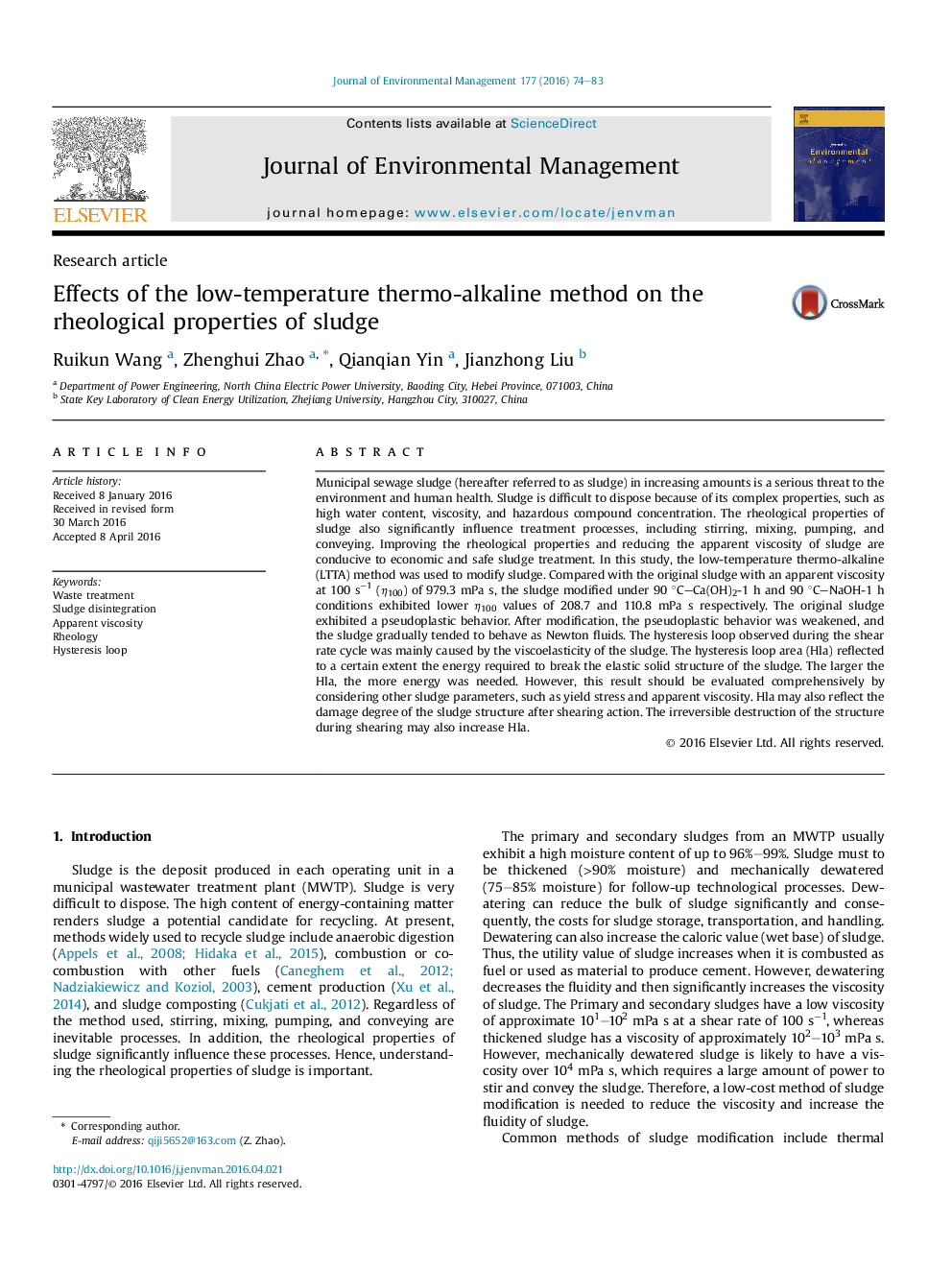| Article ID | Journal | Published Year | Pages | File Type |
|---|---|---|---|---|
| 7480328 | Journal of Environmental Management | 2016 | 10 Pages |
Abstract
Municipal sewage sludge (hereafter referred to as sludge) in increasing amounts is a serious threat to the environment and human health. Sludge is difficult to dispose because of its complex properties, such as high water content, viscosity, and hazardous compound concentration. The rheological properties of sludge also significantly influence treatment processes, including stirring, mixing, pumping, and conveying. Improving the rheological properties and reducing the apparent viscosity of sludge are conducive to economic and safe sludge treatment. In this study, the low-temperature thermo-alkaline (LTTA) method was used to modify sludge. Compared with the original sludge with an apparent viscosity at 100 sâ1 (η100) of 979.3 mPa s, the sludge modified under 90 °C-Ca(OH)2-1 h and 90 °C-NaOH-1 h conditions exhibited lower η100 values of 208.7 and 110.8 mPa s respectively. The original sludge exhibited a pseudoplastic behavior. After modification, the pseudoplastic behavior was weakened, and the sludge gradually tended to behave as Newton fluids. The hysteresis loop observed during the shear rate cycle was mainly caused by the viscoelasticity of the sludge. The hysteresis loop area (Hla) reflected to a certain extent the energy required to break the elastic solid structure of the sludge. The larger the Hla, the more energy was needed. However, this result should be evaluated comprehensively by considering other sludge parameters, such as yield stress and apparent viscosity. Hla may also reflect the damage degree of the sludge structure after shearing action. The irreversible destruction of the structure during shearing may also increase Hla.
Related Topics
Physical Sciences and Engineering
Energy
Renewable Energy, Sustainability and the Environment
Authors
Ruikun Wang, Zhenghui Zhao, Qianqian Yin, Jianzhong Liu,
